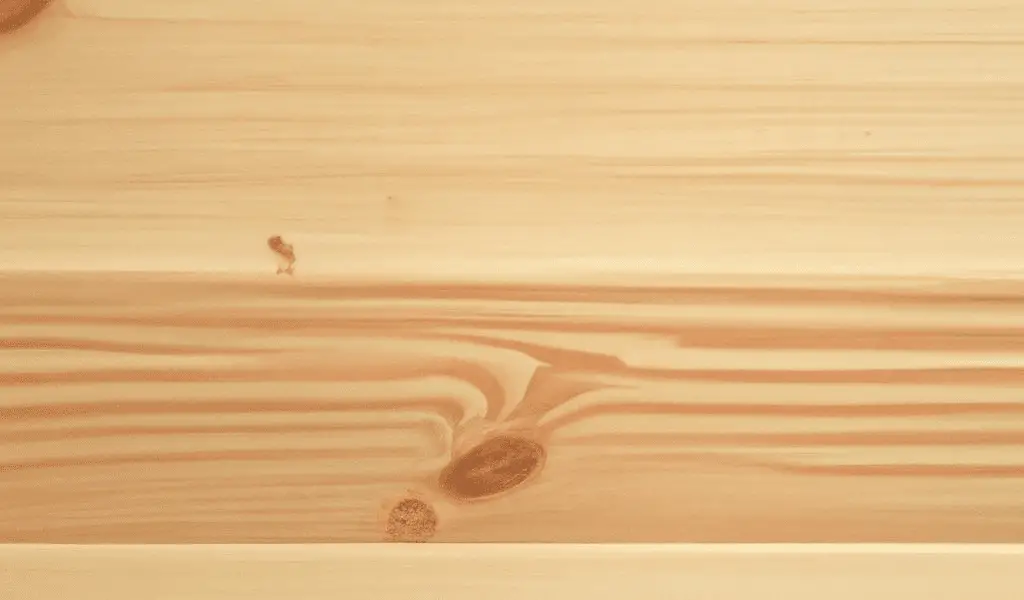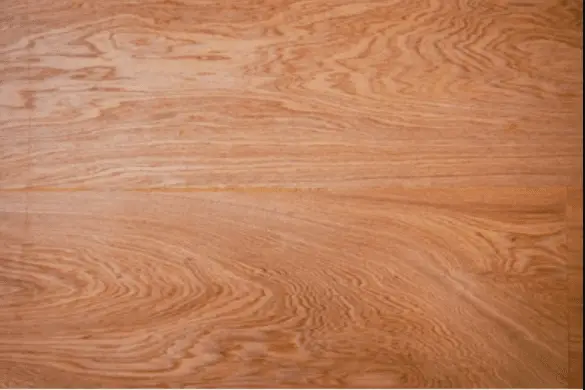Cypress and cedar are indeed the best choices for your wood-related project.
But,
Which one is better?
What is the difference between cedar and cypress?
Is cypress related to cedar?
Cypress Vs Cedarwood?
Your mind may be blown away by these questions to choose a specific wood out of these two. Since they both have further various types of wood with different perks, which makes the task of selection difficult.
Once you clarify the difference between cypress and cedar, you can effortlessly make a selection. The more clarity you have, the better work you will do in your wood projects.
We have simplified the complex decision for you by creating a detailed article on cypress vs cedar and all their aspects.
All About Cedar Wood
Cedar is a softwood with a firm and attractive rich grain that is found in the Pacific Northwest area of the United States. The wood is enriched with natural oils, which is the reason for its resistance to pests.

The color of cedar is redder. This robust wood is used for indoor and outdoor activities like home construction and other large manufacturing projects and is especially useful for decor purposes.

Varieties of cedar species are found globally, out of which western red cedar is used broadly for commercial purposes.
You need to upkeep and preserve the wood to have its new-like shine by cleaning and sealing it. And it does not protect against insects as cypress does and is medium to resistant to rot.
Cedar Wood Properties & Uses
Check out the specific properties of cedarwood.
1. For Creating Carvings:
Is cedar wood suitable for carving? Of course, yes. The softwood is effortless to carve and remains alright in shape. It is a hard-wearing wood, a great choice for creating carvings. It is naturally a deterrent to rot and decay.
2. For Fence Posts:
The aesthetic beauty of cedar with its pretty color, compactness, and fewer grains is appropriate for fencing. The stability and durability of the wood make it the right choice for fence posts. But you will have to do regular maintenance by shielding it.
3. For Birdhouses:
What makes cedarwood to be suitable for birdhouses? The insulation properties of the wood fulfill the requirements of birdhouses, such as providing snuggly space. It is easy to work with lightweight wood, and its warmth makes it the favorite place for your birds. So, You can rely on stable cedarwood for the construction of birdhouses.
4. For Creating Storage Space:
Pleasant fragrance and its natural properties of antifungal and antibacterial regard it as the best choice for chests, wardrobes, and trunks.
5. For Cladding:
Choose cedar to construct the interior and exterior cladding owing to its excellent look and uniform surface. Despite being a softwood, it has massive stability to be appropriate for cladding.
6. Good Choice For Shingles:
The suggested cedar-type wood for making shingles is western red cedar. The heartwood of cedar offers protection from decay. Top-calibre cedar wood is hard-wearing on weather elements to use for shingles and other exterior purposes. Cedar is temperature resistant, too.
7. For Pencils:
Soft and lightweight cedarwood is the absolute choice for making pencils.
All About Cypress Wood

Cypress is grown in wet weather conditions in the southeast United States. The color of cypress wood is Orangish-brown to yellowish-brown. The wood has a sufficient density of 33 pounds per cubic foot with straight grain and a fantastic combination of pale red and brown grains.

Also, it has a pleasant aroma. Cypress is strongly resistant to rot and dimensionally stable and suitable for outdoor activities. Moreover, the cypress wood floats in water.
Cypress Wood Properties & Uses
Cypress wood is specifically recommendable by manufacturers for the following applications.
1. For Outdoor Construction Tasks:
The presence of cypressene oil in cypress wood answers your question: Is cypress wood good for outdoor use? This oil is natural safeguarding in wood to protect it from decay.
The stability and strength of the wood make it suitable for heavy-load projects, such as bridges, timber framing, decking, veneers, boatbuilding, and docks. What is more advantageous is it repels splintering, buckling, molding, and warping.
2. For Siding, Roofing, & Panelling:
Cypress wood gives reddish-amber color to sliding with an appealing appearance and natural touch. This wood is appropriate for sliding as it repels rot. Prefer cypress for roofing because it stands firm against changing weather, insects, and decay.
Moreover, it is the most suitable wood for paneling owing to its natural look with the tight-grained and shining color of cypress. In these processes, you can finish and stain the wood to ensure wood safety.
3. For Dock & Pier Construction:
Its features, like durability and strong resistance power to weather, make it an appropriate wood for dock and pier construction. Use different tools to adjust it as per your expectations. This wood is resistant to buckling and shrinkage.
4. For Boat Building:
Water cannot harm the wood as it grows in dampness and water. It is already adapted to wet conditions. So, it is used for boat building.
5. For Furniture & Interiors:
Make fine furniture using cypress wood since its features of durability and stability increase the span of furniture. The well-known types of cypress wood for superior furniture are Nootka Cypress and Australian Cypress. Additionally, it is a great choice for veneers and interior trim.
6. For Flooring Purposes:
Australian Cypress is used widely for flooring because of its hardness and fine durability. Janka’s hardness of this wood is 1,360 lbf.
What is the Difference Between Cypress & Cedar?
Cypress is a softwood belonging to the conifer family. It is also known as Cupressus sempervirens. It grows in damp regions and is popular owing to its durability and resistance to decay and rot. Coniferous trees have 12 species of cypress.
Cedar is also a softwood that belongs to the Cypress family and is known as Cedrus Deodara. It is widely found in the Himalayas. This wood is appropriate for dry weather and repels decay.
There are several key differences between the two types of trees, including their physical characteristics, uses, and environmental factors. Some of these are:
1. Cypress Vs Cedar: Color And Texture
Cypress wood has shades of Yellowish brown with pitch-dark brown heartwood. Cypress has an uneven outline, rough texture, and interlocked grain. Its texture is free from resin canals. The cypress tree has needles rather than leaves but they fall later. It contains knots.
Boundless oils present in cypress wood are responsible for its strong fragrance. It can resist moisture as it is grown in wet conditions.
Cedarwood has pink to yellow shades in the sapwood and yellowish-reddish brown in the heartwood. It has a uniform, flat, and compact grain and repels fungi with knots on the surface.
You can go for cypress to have a consistent look, and the aroma of cedar is pleasing.
2. Cypress Vs Cedar: Density
Cypress wood is comparatively denser than cedar wood.
Cedar is a lighter wood. And cypress wood holds nails and screws tightly.
Choose cedar for portable and easy to work. Concerning long-lasting and robust work, choose cypress.
3. Cypress Vs Cedar: End Grain
The cypress wood has rough end grain and big pores. And it has a large oil content.
On the contrary, the end grain of cedar wood is fine with little pores and small oil content.
4. Cypress Vs Cedar: Scent
Cedar oil has a stronger fragrance than cypress oil. Cypress is a good alternative for people having allergy symptoms to cedar oil. However, both kinds of wood have a sufficient amount of oil which causes fragrance.
5. Cypress Vs Cedar: Feasibility
You will have a good experience while working with cypress wood. Since it grabs glue and paints and finishes very well.
Cedar has excellent workability as machines can be easily used on this wood.
You can carry on hand-operated tasks because of its softness.
However, there are chances of scratches and dents on the cedar.
6. Cypress Vs Cedar: Durability
The heartwood part of mature cypress is more durable than young cypress. It has more rot resistance as compared with cedar. Monterey cypress, one of its species, is approved in research for exterior projects.
On the other hand, some of the species of cedar are suitable for outdoor activities, and others are not. Some extremely soft species are not suggested for large manufacturing purposes. Resistance to rot and weather are the basic properties of the cedar.
7. Cypress Vs Cedar: Janka Hardness
It is another way to examine the hardness of wood by noticing the pressure needed to press a steel ball into the wood.
In this case, the larger number of Janka hardness indicates the high strength of the wood.
Janka’s hardness of cypress and cedar is 510 lbf and 320 lbf, respectively.
That reflects the high toughness of cypress as compared with cedar.
But it doesn’t mean you will rely only on cypress. Cedar is also a strong wood used for construction projects.
8. Cypress Vs Cedar: Fungus-Resistant
Cedar consists of a fungicide, which is the reason for its rot resistance. Whereas cypress does not have enough resistivity to protect against fungus.
9. Protection Against Dents
Cedar is prone to dents and scratches, whereas cypress is not. Both are softwoods, but cypress is comparatively harder than cedar.
10. Cypress Vs Cedar: Cost
The price of wood indeed depends on the area you live in and the availability of wood there.
In the Northwest, there is a plethora of cedar. So, cedar is not as expensive as cypress there. In the eastern United States, cypress is available on a large scale. It is more economic-efficient to you than cedar there.
And, mostly, cypress wood is more costly than cedar because it is scarce, which has increased its prices. On the other hand, cedar is available ample in the market, so there is control over its price.
Draw Attention!
Cedar takes 100 years to be matured to be usable. But manufacturers use immature wood for mulch production, which is not strong and does not even repel rot. Thinness is the recognition of immature wood.
The higher the grade of the cypress, the more price it will have. The reason is grade A does not come with any defects and knots opposite to other grades like B, C, and D.
Altogether, price depends on various factors while choosing a wood, such as availability, the kind of species, grade, and size.
Pros & Cons of Cedar and Cypress
Both types of wood have more pros and fewer cons which makes it difficult to choose between the two. Check out the pros and cons for both cypress and cedarwood.
Cypress Wood Pros
Cypress Wood Cons
Cedar Wood Pros
Cedar Wood Cons
Frequently Asked Questions
Winding Up
Now, you may have crystal clarity on both types of wood: cedar and cypress. Both have mostly similar uses besides exceptional cases. Cypress and cedar are rich in natural oils and chemicals to provide them with resistance to insects and decay. Both have the features of aroma due to the ricḥness of oils.
Though we discussed specific and common uses of both cedar and cypress wood, it entirely depends on your project to use a particular wood. For instance, prefer using cypress for external and tough projects.
If you need a ravishing wood for carving or interior trim, the better choice is Cedar.
Apart from the wood type, the source or manufacture where you get it matters a lot regarding wood quality.
It is advisable to do thorough research about wood and its key features and demerits. Also, have surety about your needs and priorities regarding your wood project.
